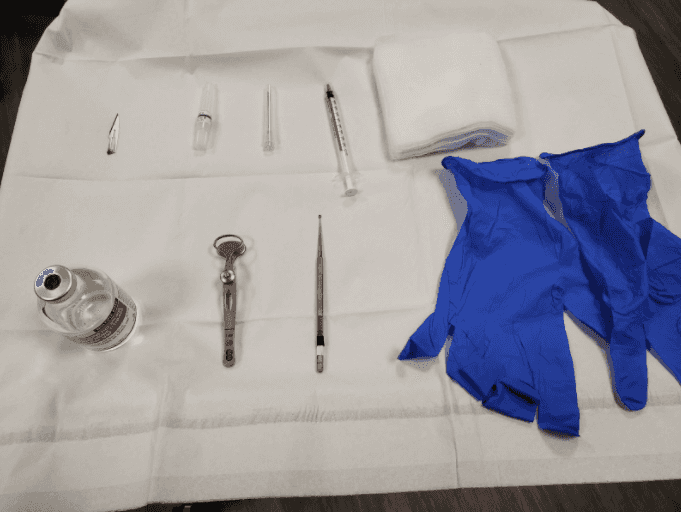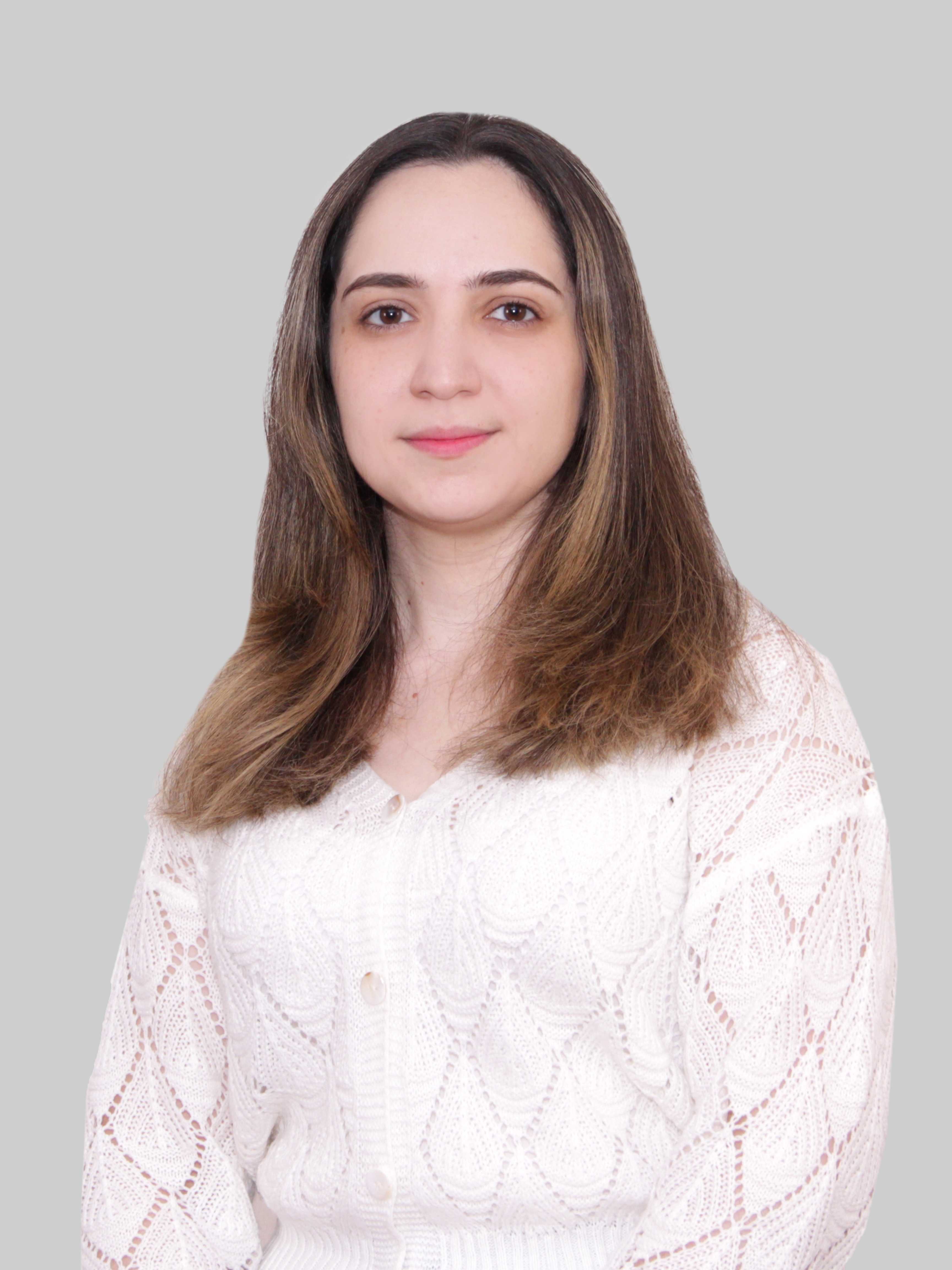Incision and Curettage on a Left Upper Eyelid Chalazion
Abstract
A chalazion is a sterile granulomatous inflammation of the Meibomian or Zeiss glands. It results from the obstruction of gland orifices, which leads to accumulation of sebum in the tarsus and eyelid soft tissue. The resulting inflammation causes erythema, pain, and swelling. Patients may note a previous history of similar complaints, as well as a history of rosacea and chronic blepharitis. Chalazion incision and curettage is a treatment of choice in unresolved chalazia or cases that do not respond to conservative treatments such as warm compress. Chalazion surgery aims to effectively drain the blocked gland and remove the inflamed tissue, providing relief to patients and restoring the natural appearance of the eyelid. This article discusses and demonstrates the preoperative assessment of the patient, the preparation, surgical procedure, and the postoperative care.
Case overview
Focused history
The patient presented with a history of chalazion on the left upper eyelid for 1 month. Conservative treatment with warm compresses failed, and the patient requested surgical removal. Incision and curettage was recommended based on the location and size of the lesion.
Exam
Physical examination
- Slit-lamp examination. Evaluation of lesion location and size. The eyelid should be everted to evaluate the posterior surface as well.
- A complete ocular examination. This includes visual acuity testing, anterior segment examination, and fundus examination. Meibomian gland function evaluation is also performed.
Natural history
Chalazion is often associated with rosacea and chronic blepharitis. Chalazia resolve spontaneously without treatment in at least a third of cases. A persistent lesion requires medical intervention.1, 2
Options for treatment
- Lid hygiene such as hypochlorous sprays, medicated lid wipes, and warm compresses are integral parts of conservative treatment.2–4
- Expression of the lesion contents with a lid massage can be effective in fresh lesions near the eyelid margin.5
- Topical antibacterial and anti-inflammatory treatment. Tetracycline and erythromycin ointments are treatments of choice if there is a break in the skin; however, they are contraindicated in children and during pregnancy.6
- In cases where preseptal cellulitis is likely or the infection is spreading across the lid, oral antibiotics may be considered such as Augmentin, Keflex, and azithromycin.4
- Intralesional corticosteroid injection. It is indicated in chronic chalazia, especially if the lesion is located close to structures that can be damaged during surgical intervention, such as the lid margin, lacrimal punctum, or skin color.4, 7
Rationale for Treatment
The surgical procedure is aimed at marsupialization of the chalazion.
Special Considerations
- Given the risk of masquerading malignancy such as sebaceous carcinoma, pathologic examination of surgical material is indicated in recurrent or atypical cases.4, 8
- In cases of anterior chalazion, a skin incision may be preferred.9
Potential complications
Complications are rare and include the following conditions:1, 4, 6
- Infection
- Bleeding
- Scarring
- Recurrence
- Eyelid irregularity and asymmetry
- Dry eye disease
Discussion
The setup for chalazion removal used at Boston Vision can be seen in Figure 1. Following local anesthesia with a 2% lidocaine and epinephrine injection, a chalazion clamp is centered over the lesion and the lid is everted. A vertical conjunctival incision is made with a number 11 blade, stopping several millimeters from the eyelid margin. The contents of the lesion are curetted, and the capsule is removed. The lid is reverted, and pressure is applied.
 Figure 1. Chalazion set up used at Boston Vision.
Figure 1. Chalazion set up used at Boston Vision.
The surgery was uneventful. Homeostasis postoperatively was obtained via mild application of pressure. The patient was given erythromycin ointment for use two times per day for five days. At follow up one week later, the patient noticed their eyelid was no longer swollen and the chalazion had not returned.
Other techniques are available. Some practitioners may employ cautery.4 In some cases, such as anteriorly located lesions or a large chalazion, a skin incision is preferred instead of a transconjunctival approach.9
Equipment
- No. 11 Bard-Parker blade
- Chalazion clamp
- Chalazion curette
- Gauze
- Exam gloves
Disclosures
Nothing to disclose.
Statement of Consent
The patient referred to in this video article has given their informed consent to be filmed and is aware that information and images will be published online.
Citations
- Salmon JF, Kanski JJ. Kanski’s Clinical Ophthalmology E-Book: A Systematic Approach. Elsevier. Published online 2020.
- Wu AY, Gervasio KA, Gergoudis KN, Wei C, Oestreicher JH, Harvey JT. Conservative therapy for chalazia: is it really effective? Acta Ophthalmol. 2018;96(4):e503-e509. doi:10.1111/aos.13675.
- Rumelt S. Ophthalmology, 4th Edition, (in print and online) Yanoff M, Duker JS. (2013) ISBN 978-1455-7398-44, Elsevier. Graefe’s Arch Clin Exp Ophthalmol. 2017;255(2). doi:10.1007/s00417-015-3050-y.
- Reilly J, Gaiser H, Young B. Clinical Procedures for Ocular Examination. Fifth Edition. Chapter 10.7 Chalazion Removal. 2023.
- Caravaca A, Alió del Barrio JL, Martínez Hergueta MC, Amesty MA. Intense pulsed light combined with meibomian gland expression for chalazion management. Arch Soc Esp Oftalmol. 2022;97(9). doi:10.1016/j.oftal.2022.03.005.
- Korn BS. 2021-2022 Basic and Clinical Science Course, Section 7: Oculofacial Plastic and Orbital Surgery. Am Acad Ophthalmol Sect 7. Published online 2021.
- Akbani I. A study of management of primary chalazion in adults by intralesional injection of triamcinolone acetonide. Perspect Med Res. 2022;9(3). doi:10.47799/pimr.0903.06.
- Salimi A, Bergeron S, Arthurs B, Burnier MN. Sebaceous carcinoma masquerade syndrome: importance of biopsy and histopathological examination. Hum Pathol Case Reports. 2020;21. doi:10.1016/j.ehpc.2020.200410.
- Hossain KA, Rashid MA, Islam AR. Comparative study of surgical treatment of chalazion. Faridpur Med Coll J. 2015;9(2). doi:10.3329/fmcj.v9i2.25676.
- Caravaca A, Alió del Barrio JL, Martínez Hergueta MC, Amesty MA. Intense pulsed light combined with meibomian gland expression for chalazion management. Arch Soc Esp Oftalmol. 2022;97(9). doi:10.1016/j.oftal.2022.03.005.



